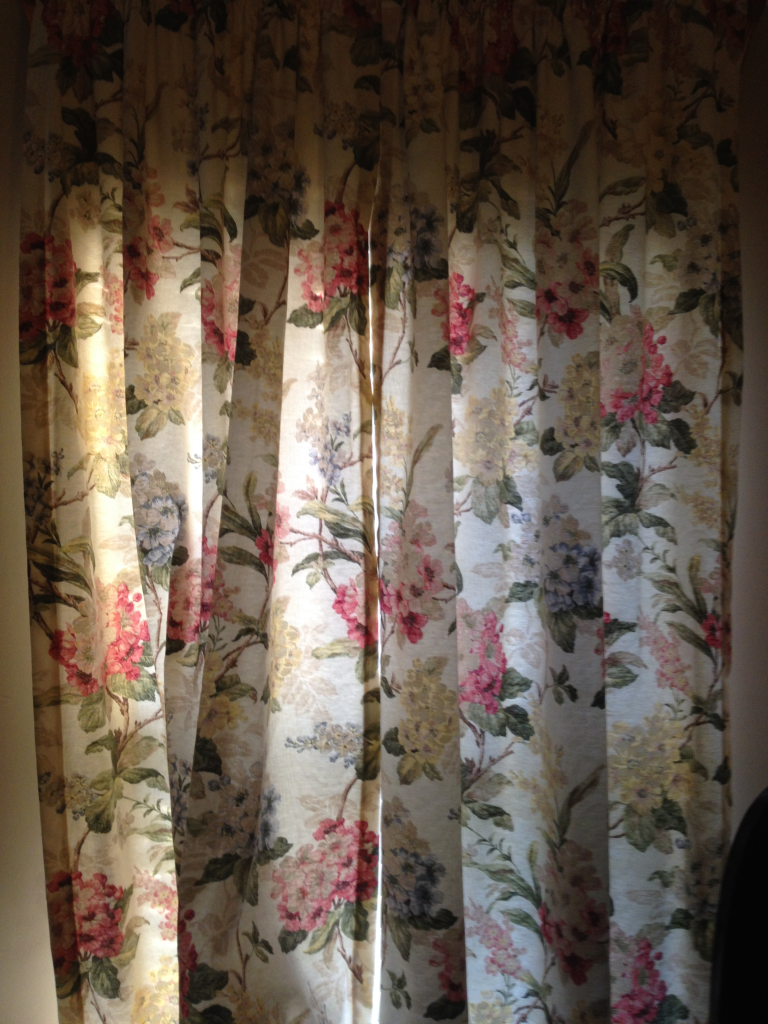“¿Qué es esa cosa Installation Art?” by Óscar Diaz
|
Mi mamí me preguntó “¿Qué es esa cosa Installation Art?” I put the book down and walked with her around our casita. Guadelupe, Jesús and various Santos atop entrance ways watching over us as we move from room to room. I gestured at everything. How all the walls are different bright colors, colors so llenos de vida that they make sure we never forget las calles de aya. The beds in each room with fuzzy cobijas with depictions of dolphins, lions and landscapes. All of the armoires, mirrors and cabinets that all look like they came out of el Palacio Nacional. Floral curtains that give off the most memorizing glow at sunset. Sombreros y Machetes older than me hanging in every room.The plants not shunned to a corner but floating and standing where they please. All of them kinda-sortas, close-enoughs, casi casi to the plants with long native names that my dad use to tend to in Arambala. I hope he never stops repeating their names to me. We both stand in front of countless picture frames in each room that all seem to melt time together. We say all the names as we trace faces. Tía Irma, tía Alba y su hija la Jenny and so on and so on from frame to frame. In the stairway, a photograph of my sister Dora’s wedding in NY, nieces and nephews of mine in El Salvador who I haven’t met and an old sepia ID of my dad in his teenage years. I tell her how much I love the artesanal wooden llaveros with puns on them right by the front door that let our guests know that the stoic salvadoreñx is a myth. In the kitchen we are greeted by another llavero with text that lets you know not to fuck with my mom’s agency. “¡LA QUE COCINA NO ESTÁ Y LA QUE ESTÁ NO COCINA!” Then a sea of jars filled with spices, afro-native brujx remedios, tiste, curtido etc. I swear the curtido jar in the dining room is a horcrux of mine. A tiny mountain of pan dulce located on the kitchen island. Thanks to a church doña you can also find smuggled across borders goods like queso duros, semitas, anonas and horchata mix from San Miguel. I tell my mom to breathe in with me. The smell of fresh cilantro sneaking in from el jardín atrás that can be seen through the abuela curtains above the sink. The speaker system installed in most rooms around the house is used most in the kitchen. I’ve always known salvadoreñxs to dance while they cook. Stirring sopa de pata and stirring those hips is how it goes. You’ll see at least six family members at a time in here. I learned to dance like all the brown femmes in my family in the kitchen. Percussive sounds of hands working with masa under the vivacious tonal patterns of campo speech. It’s a forum for everything from ARENA vs. FMLN to the daily chisme and everything in between. I learned the secret ingredients and nuances of these ancestral recipes that could never be found in a cookbook. “Las tortillas de Soyapango son diferentes de las de un lugar como La Union” my mom says while demonstrating size differences with her hands. I learn which flavors are afrodescendiente and which are native and which are a mixture every time a new recipe is gifted to me. There are flavors that we are uncertain where they came from as well. My nephew Carlos the other day learned to say “cacaguates” when he wants peanuts. Passing on words like cacaguate keeps us connected. We grab a milhoja each and walk over to the living room. The muñecxs from Chalatenango with skin complexions that actually resemble my niece Sophia, sleeping on the floral print sofa with trompos spread out on the floor beneath her. The maca which probably would be better placed outside…with the other one. The elaborate shelves filled with wedding, quinceanera, and birthday recuerdos. Next to it is a string of free calendars given at various Salvi panaderias. 2009, 1998, 2013 and 2012. We keep them all since they all have landscape photography of El Salvador. After every chunche y bolado is accounted for in the room, I look back at my mother and tell her “Mamí, este mini El Salvador que usted y papi han construido aquí en la casa. Esto es Installation Art.” Óscar Diaz is a genderfluid Salvadoran artist, curator, art historian, guest lecturer and writer living in the Boston area. They are releasing a book of vignettes called Cajita de Sorpresas in 2015. They run two art databases: Centralamericacontemporary and Salvadoranarthistory. Interiores @ Galería Salarrué in East Boston is their next curatorial project opening August 8th, 2014. They are one of the original members of the ¡Qué Lástima! Boston latinx art collective. They recently redid their entire wardrobe based on the color palette of clothes on Yu-Yu Hakusho. They can be contacted at odiaz@alumni.berklee.edu or through smoke signals. |
